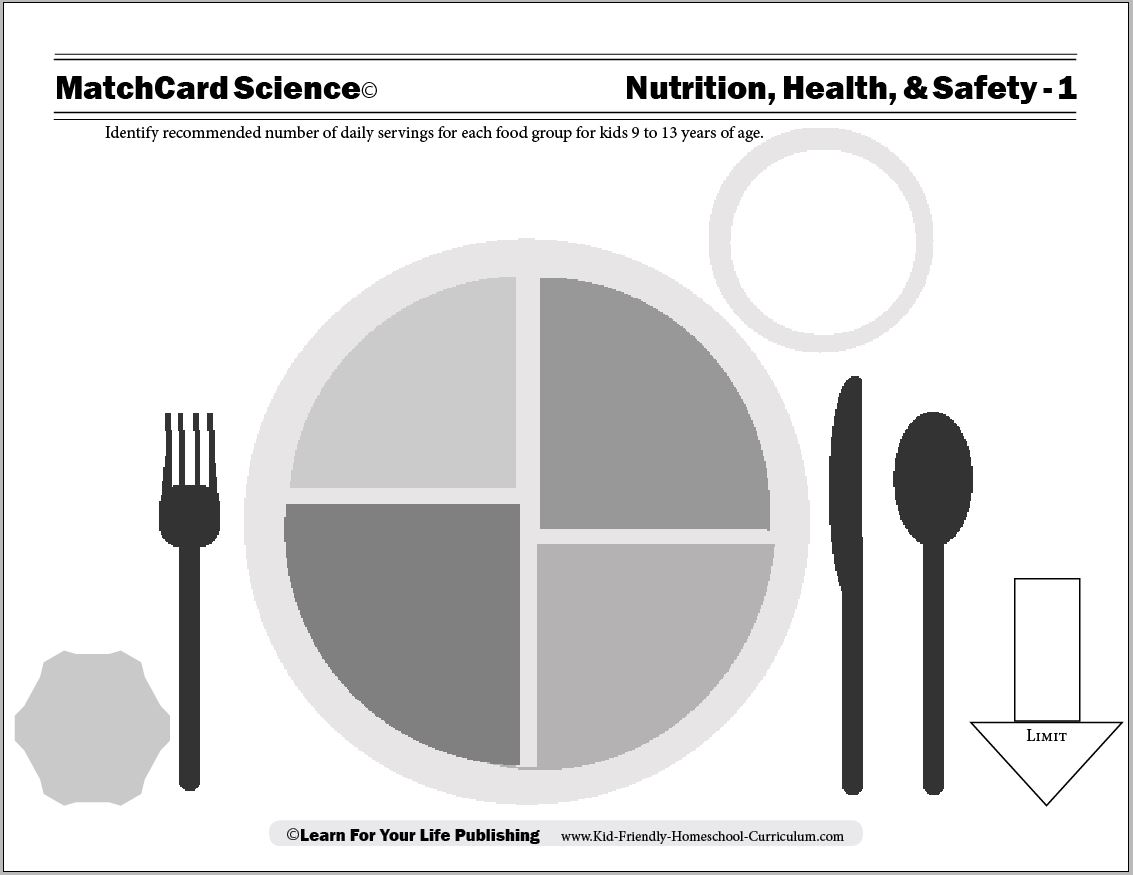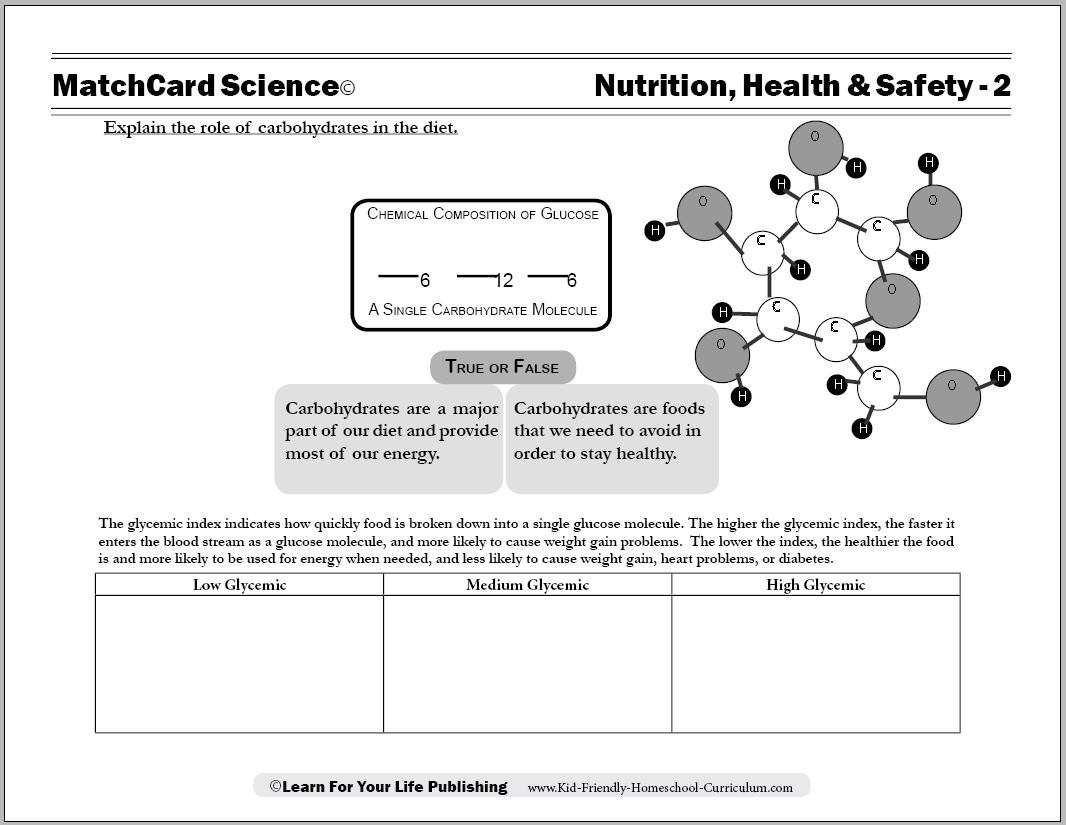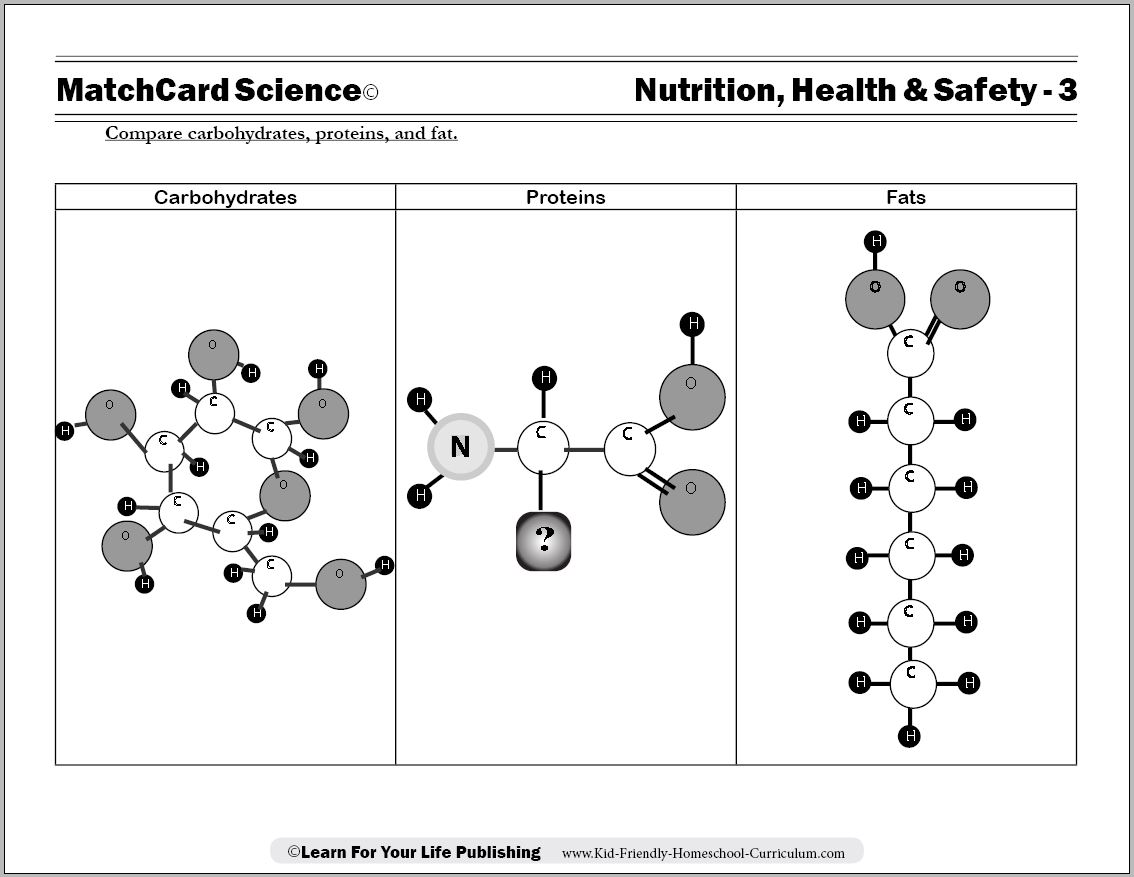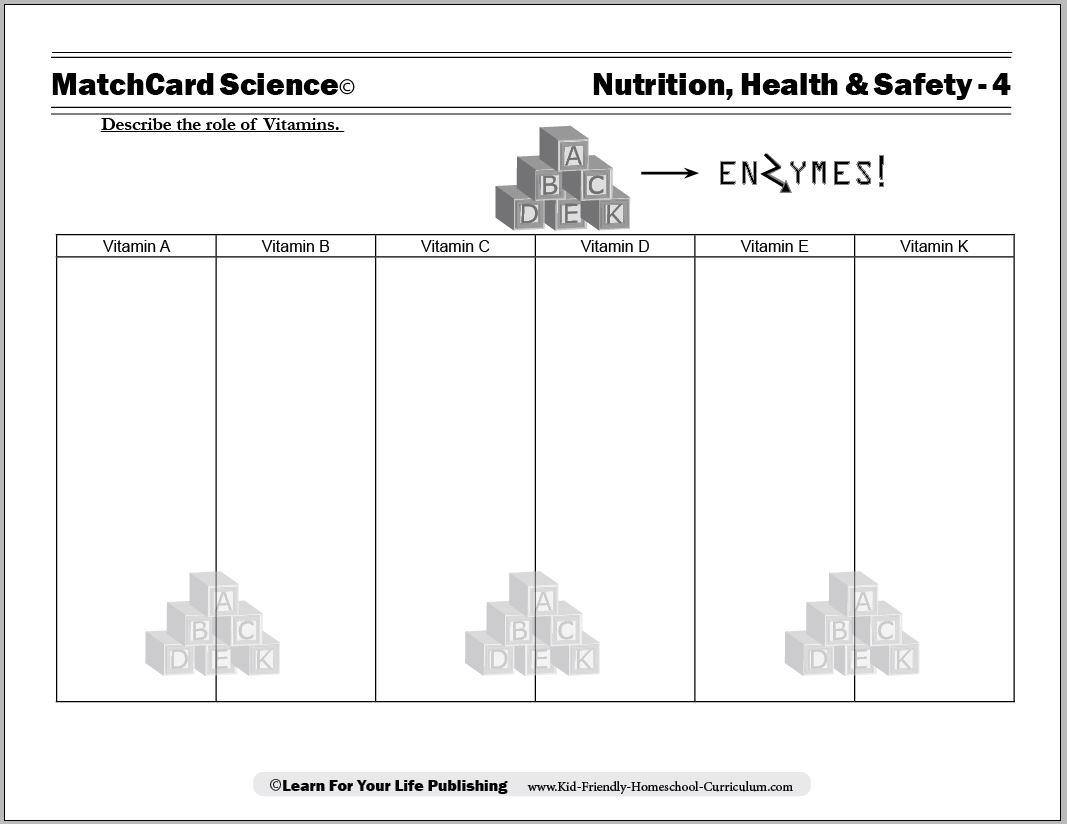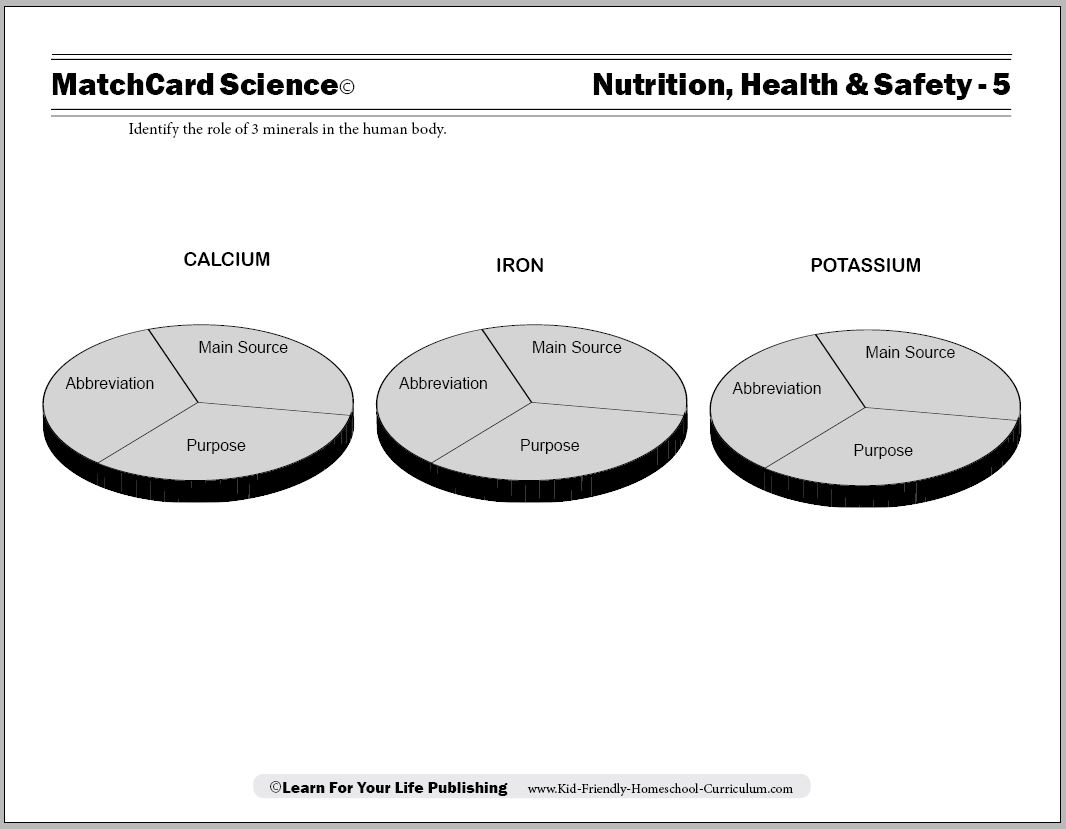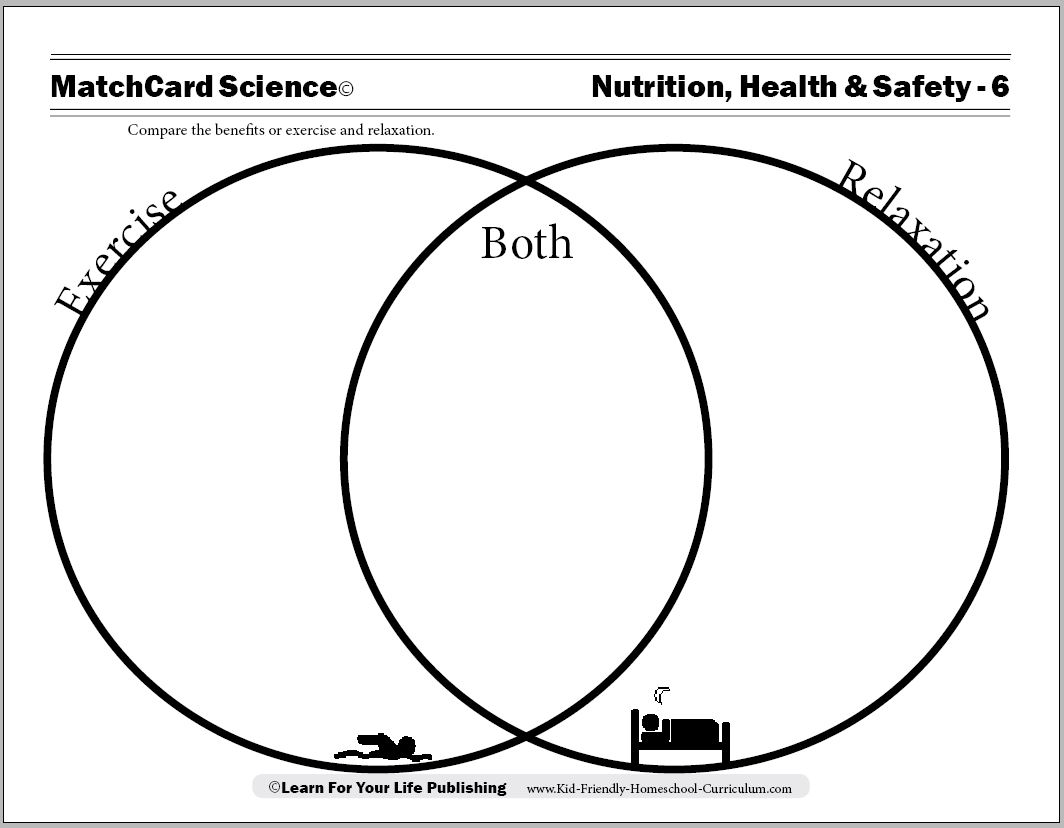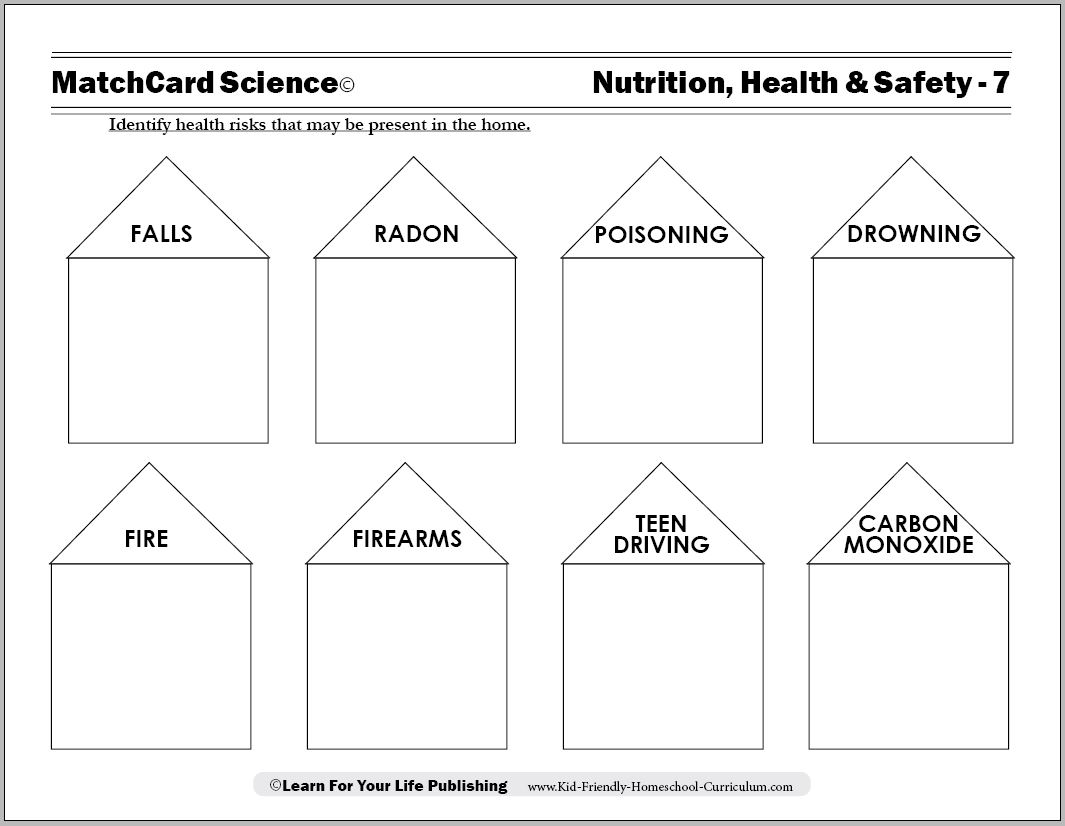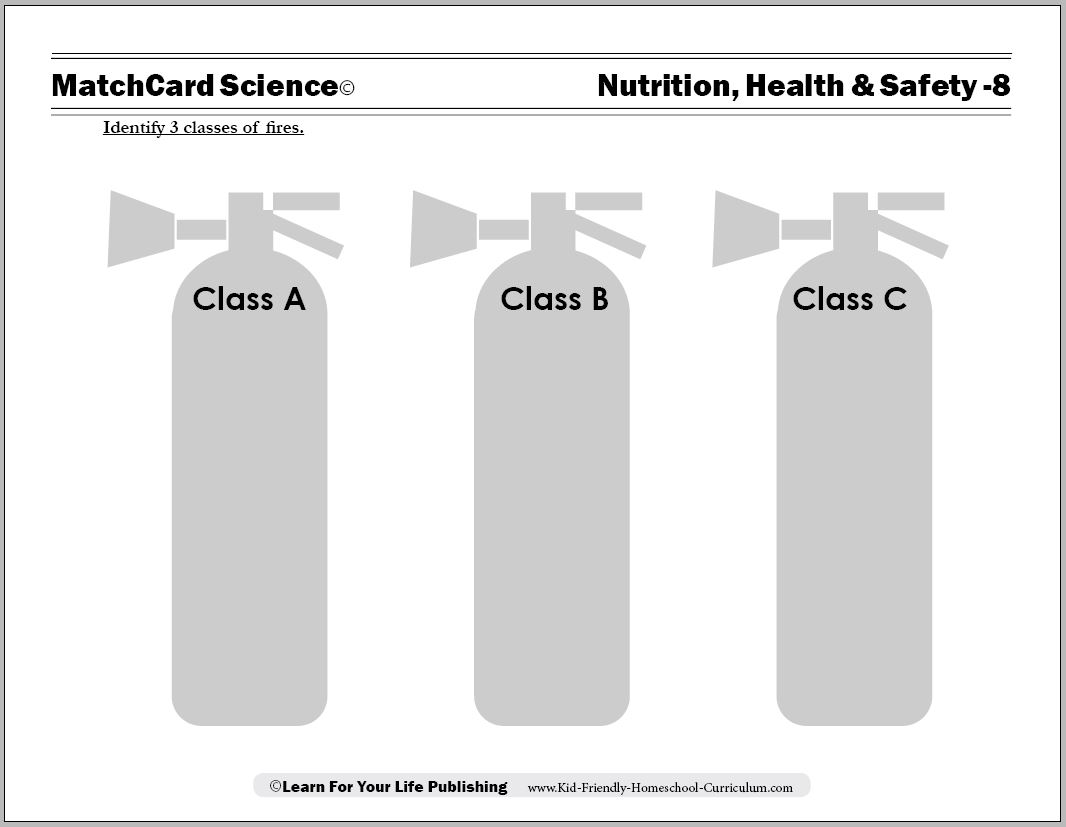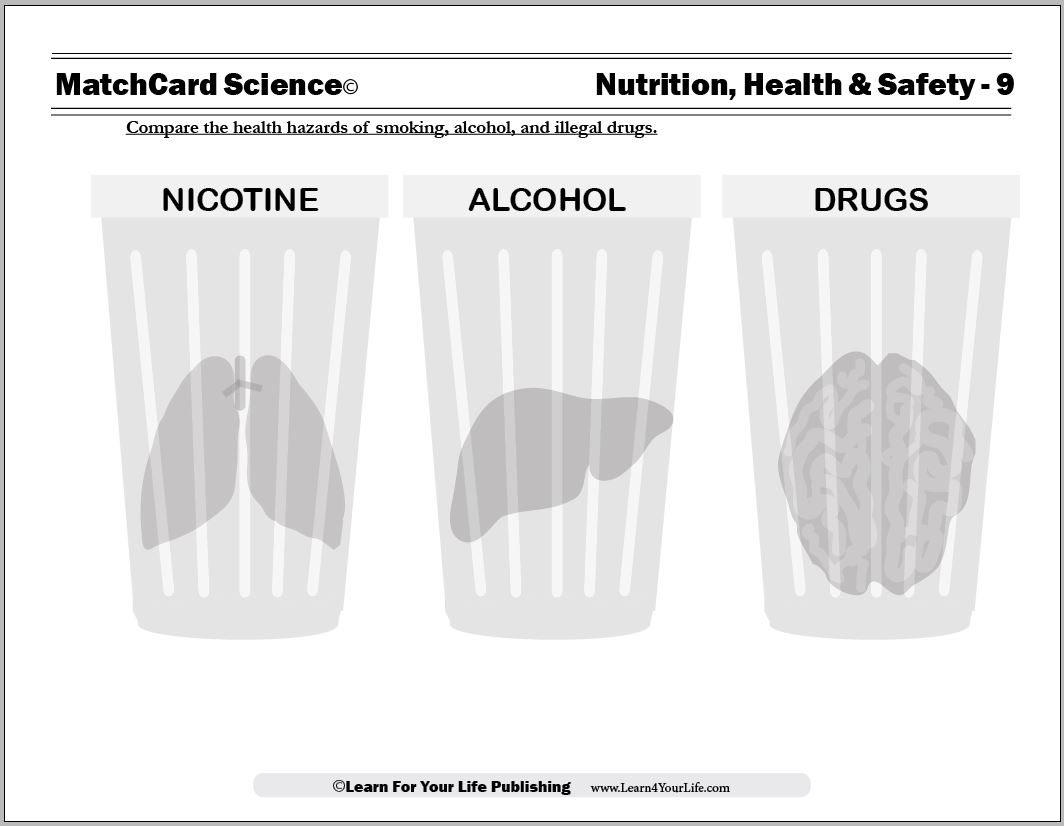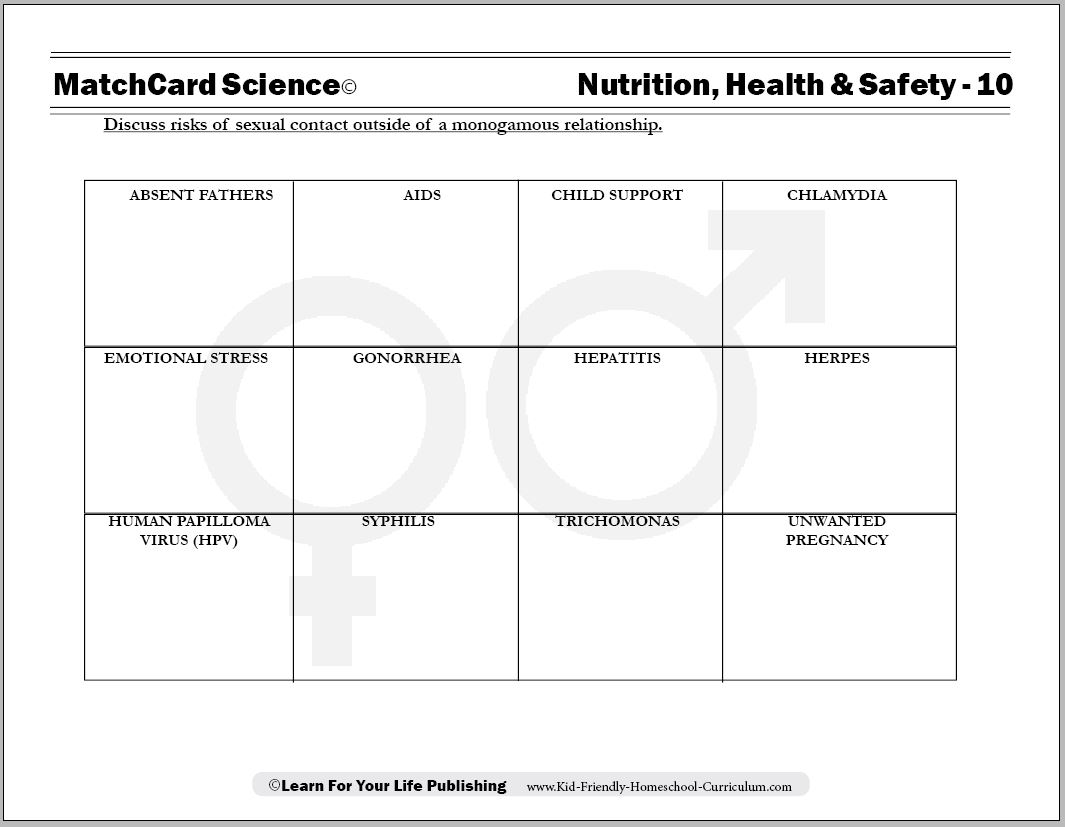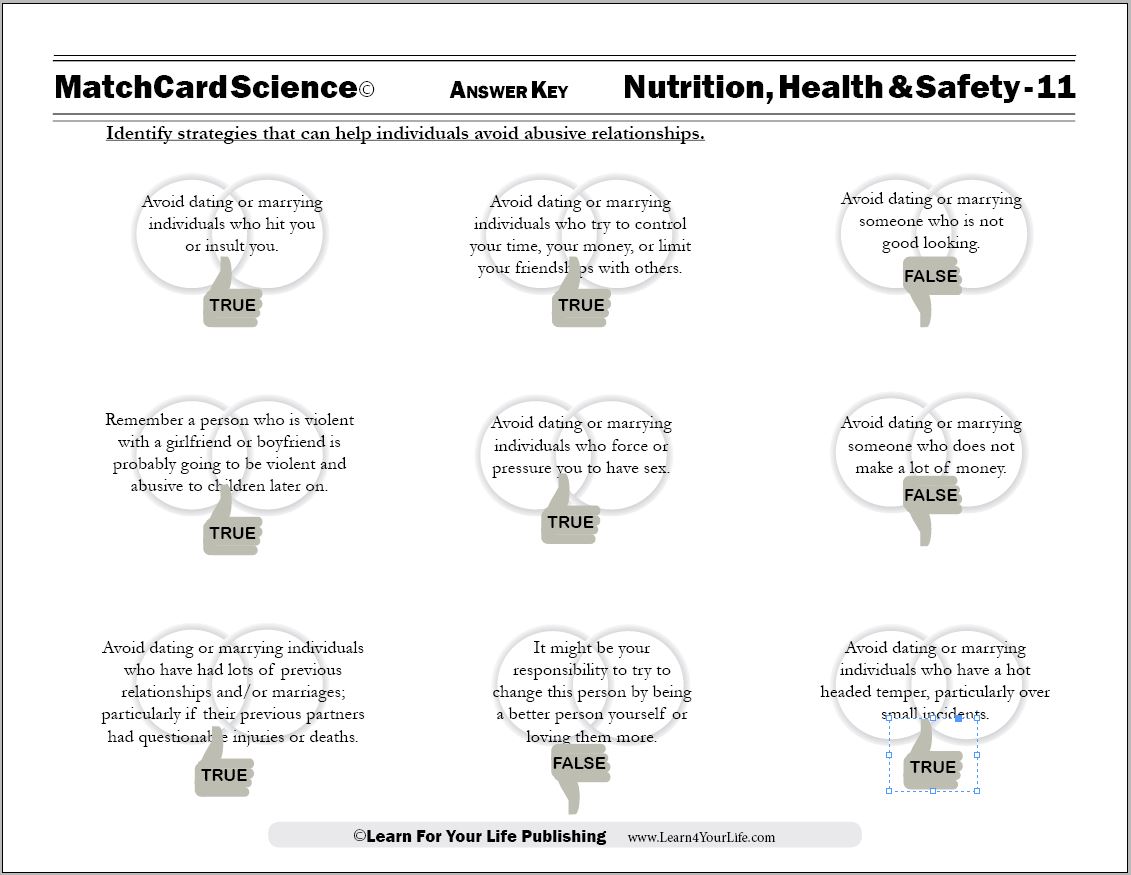Nutrition For Kids
These are the individual lessons from the Nutrition, Health, and Safety Unit Study
Nutrition Facts and Games
MatchCard #1: Identify the recommended number of daily servings from each food group for kids 9 to 13 years of age.
Activities: Measure rice, make ice cream, test the taste of applesauce from different apples, compare cream and milk, compete to see who knows the most kind of fruits and vegetables: who said nutrition facts had to be boring?
Read More: Games to Teach Nutrition
What Is A Carbohydrate?
MatchCard #2: Explain the role of carbohydrates in the diet.
Activities: Make a Carb Checker with Iodine and test foods, Chew Up Some high fiber and low fiber foods, make a poster of high and low glycemic foods, make a carbohydrate molecule
Read More: Crunch Up Some Carbohydrates
Protein, Fat, and Carbohydrates
MatchCard #3: Compare proteins, fats, and carbohydrates.
Activities: Make molecules of each nutrient. Experiment with butter and margarine. Test for proteins in foods. Find out how soap washes greasy dishes. Touch a protein matrix.
Read More: Compare proteins, fats, and carbohydrates.
6 Essential Vitamins
MatchCard #4: Describe the role of vitamins.
Activities: Make a pineapple marinade to act as a protein-splitting enzyme. Make a solution to check for Vitamin C in different juices. Check if Vitamin E does protect from aging. Find out how much a mg really is.
Read More: Quiz yourself on vitamins: How much do you really know?
3 Important Minerals
MatchCard #5: Identify the role of 3 minerals in the body.
Activities: Watch what acid does to the calcium in bones. Check for iron in your breakfast cereal. Test what mineral rusts. Watch potassium burn.
Read More: 3 minerals your body needs.
Exercise and Relaxation
MatchCard #6: Compare the benefits of exercise and relaxation.
Activities: Play the Memory Checker game. Find which of your favorite forms of exercise burn the most calories. Practice different ways to relax.
Read More: Benefits of relaxation and exercise.
Staying Safe at Home
MatchCard #7: Identify health risks that may be present in the home.
Activities: "See" your house as a blind person might experience it. Practice fire safety measures. Check radon and carbon monoxide detectors.
Read More: Home safety measures.
Classes of Fires
MatchCard #8: Identify the 3 classes of fires.
Activities: Compare fires and fire extinguishers. Practice using a fire extinguisher. Build a campfire. Smother the flame of a candle.
Read More: three classes of fire.
Substance Abuse
MatchCard #9: Identify the health risks of smoking, alcohol, and illegal drugs.
Activities: Calculate the cost of smoking. Investigate the surgeon general's warnings. Find articles in your local news of substances impacting teens. Practice avoiding substances when peer pressure is exerted. See how cool smoking can be when you have lung damage.
Read More: Risks of Smoking, Alcohol, and Drugs
Risks of Sexual Behavior
MatchCard #10: Discuss risks of sexual contact outside of a monogamous relationship.
Activities: Compare different risk factors of sexual activity. Assess different prevention strategies. Learn the ABC's of STI's. View pictures of different sexually transmitted infections. Use pennies to calculate the risk of pregnancy with different forms of birth control.
Read More: Sexuality Risks
Avoiding Abusive Relationships
MatchCard #11: Identify strategies that can help individuals avoid abusive relationships.
Activities: Compare healthy relationships, unhealthy relationships, and abusive relationships. Discussion questions and role play scenarios are suggested.
Read More: Abusive Relationships

MatchCard Science
A complete homeschool science unit study with activities for every objective.
About Our Site
Hands-On Learning


